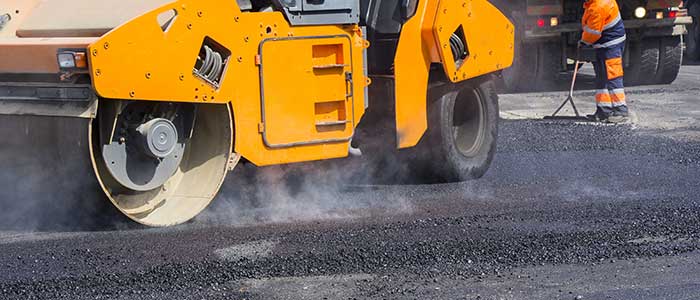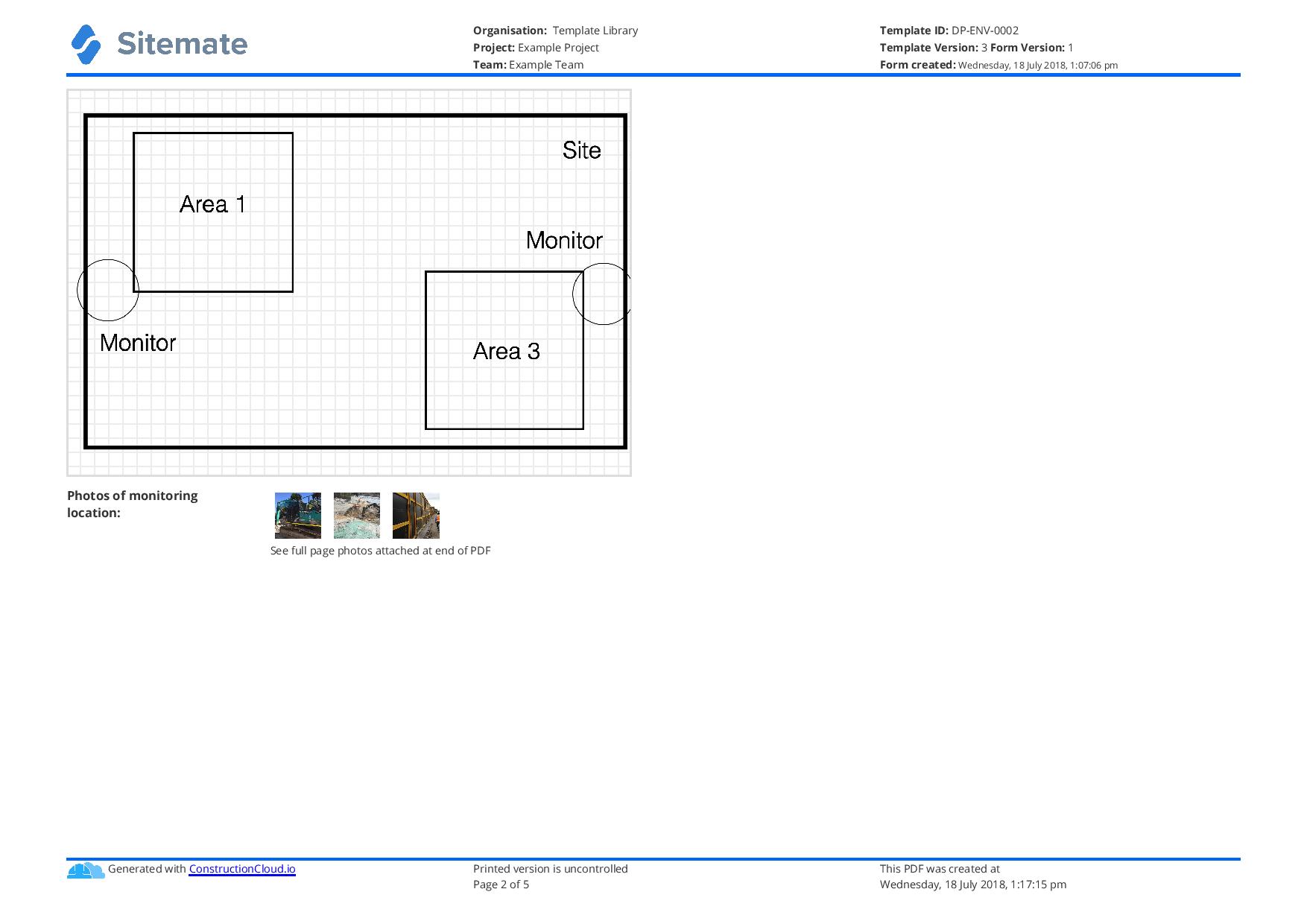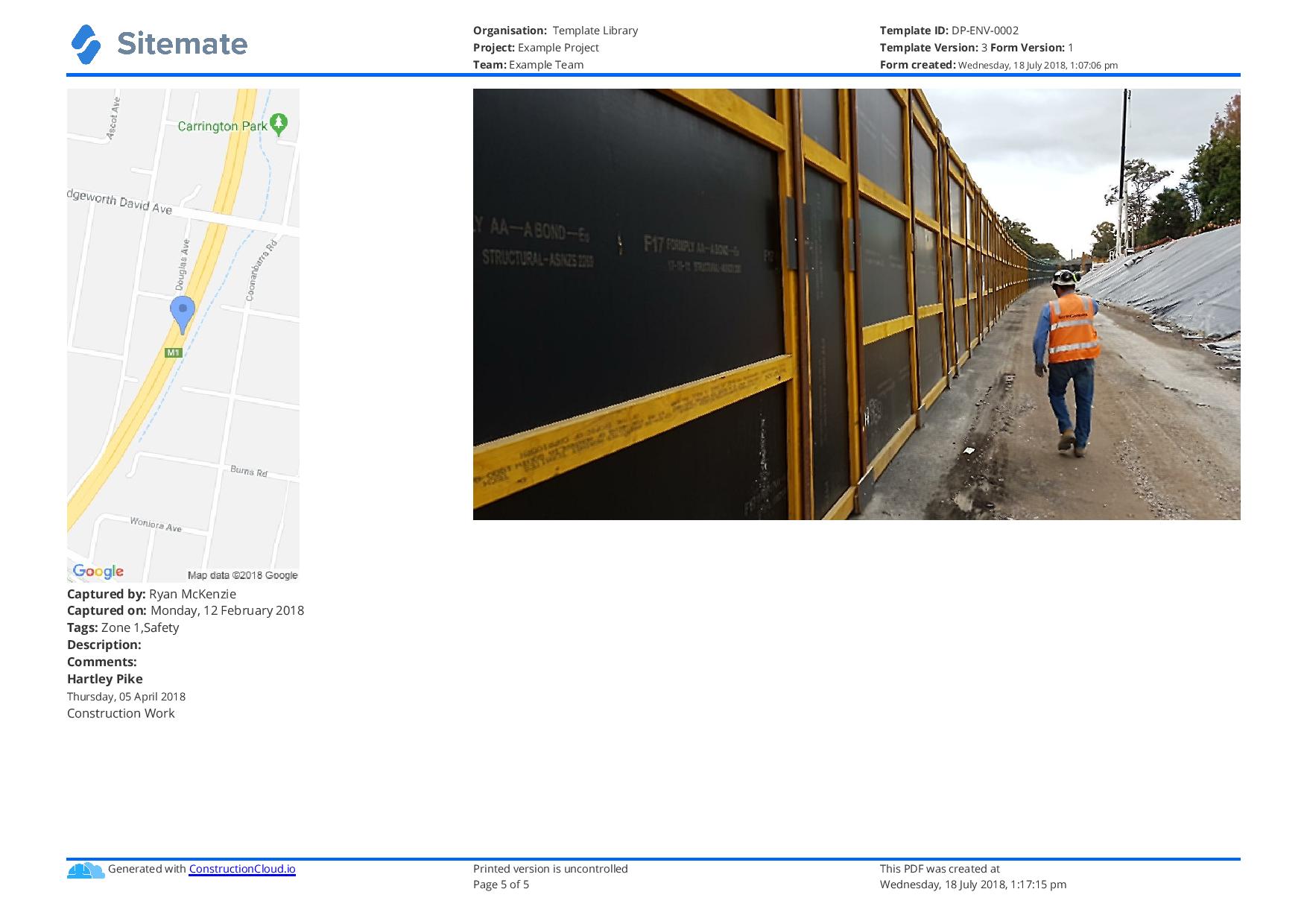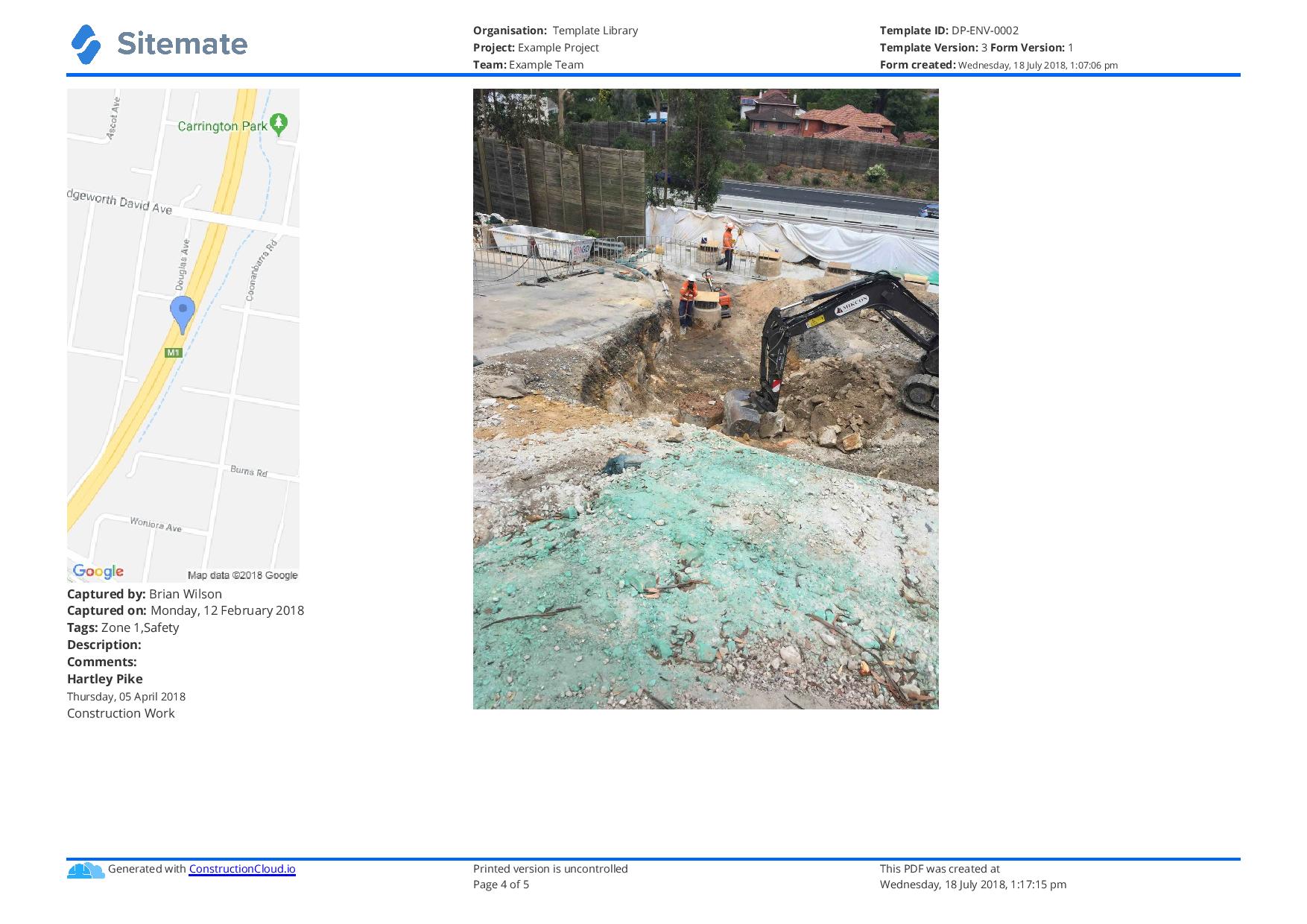Enviro – Construction site noise pollution and control
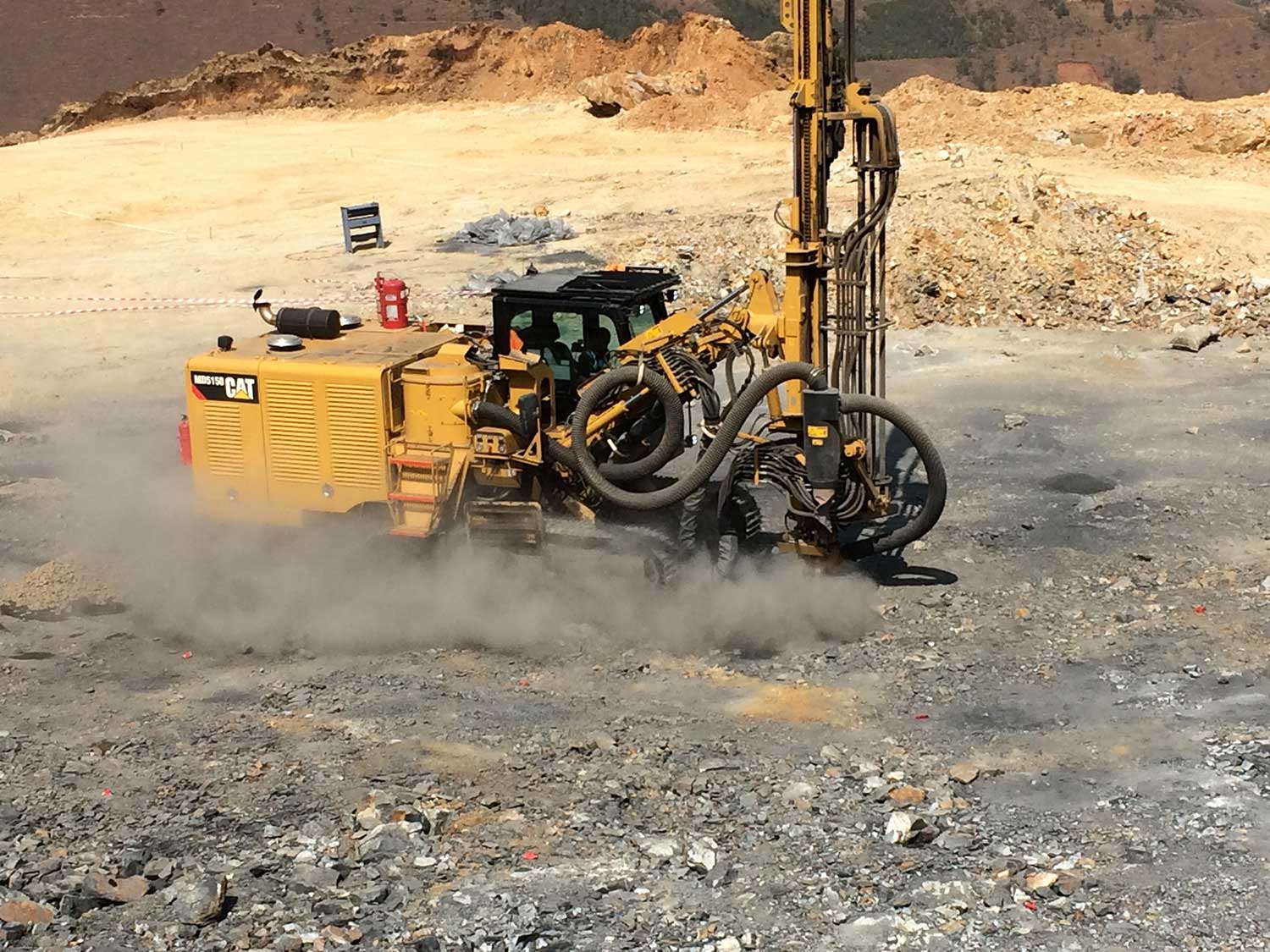
Construction site noise pollution and control best practices
The state of noise pollution from construction sites
Construction sites are inherently noisy, and they are a one of the most frequent sources of noise pollution on the planet. Heavy machinery, power tools, schools of people and the necessary radio result in a chorus of noise for most of the day - sometimes at extremely loud levels.
Between all of these noise making elements of every day construction sites, thousands of workers submit hearing loss compensation claims and thousands of people complain about construction site related noise.
The main community concerns related to construction sites include early starts (people like their sleep), loud radios, insufficient notification and excessive hours of operation. The main concerns for workers is having their hearing effected or permanently damaged by the close and frequent proximity to some serious noise.
Controlling noise to satisfy all stakeholders - construction site workers, nearby pedestrians and local communities, and government agencies - requires conscious thought and effort.
While some of the noise pollution and noise emitted from site is inevitable, understandable and mostly uncontrollable, there are some construction site practices and easy-to-implement controls which site workers and construction companies can institute to better control and mitigate noise.
Construction site noise pollution best practices
While regulatory bodies and local governments and councils create laws, regulation and restrictions around noise pollution to protect nearby communities and workers on site, it's important for construction companies and workers to be conscious of their environment and the noises being emitted.
It's important for the people and organisations involved in conducting work and supplying equipment to construction sites to do everything within reason to mitigate noise pollution and control the constant stream of loud noises.
We've compiled a few noise pollution control best practices below. Most of these practices can be incorporated into standard operating procedures or practice, and don't inhibit project progress or work getting done.
Construction site noise monitoring and testing
As the saying goes, you can't improve what you can't measure. And luckily for us, we can measure and monitor site noise in a systematic and smart way which helps companies and people make more informed decisions about the preventative or corrective actions necessary to improve noise pollution control on site.
Outside of helping companies to understand the actual noise levels and noise pollution, and whether this falls within the allowed and specified levels, conducting noise monitoring also enables companies to protect their own reputation and prevent unfair complaints or litigation from hurting them. If a community files a complaint about noise, then it is important for a company or site to be able to point to the facts; facts which can be derived from noise monitoring.
Because we know the impacts of certain levels and frequencies of noise, noise monitoring also enables companies to make proactive decisions about how to protect their workers - like more frequent breaks or a change of equipment or machinery.
There are a number of noise monitoring equipment vendors and processes which can be employed on your site, and you can document your noise monitoring findings using a simple noise monitoring report template like the one below. It enables you to document the equipment used to monitor noise, as well as the actual findings. Completing sand storing standardised noise monitoring reports helps keep the neighbours happy, and the regulatory bodies satisfied.
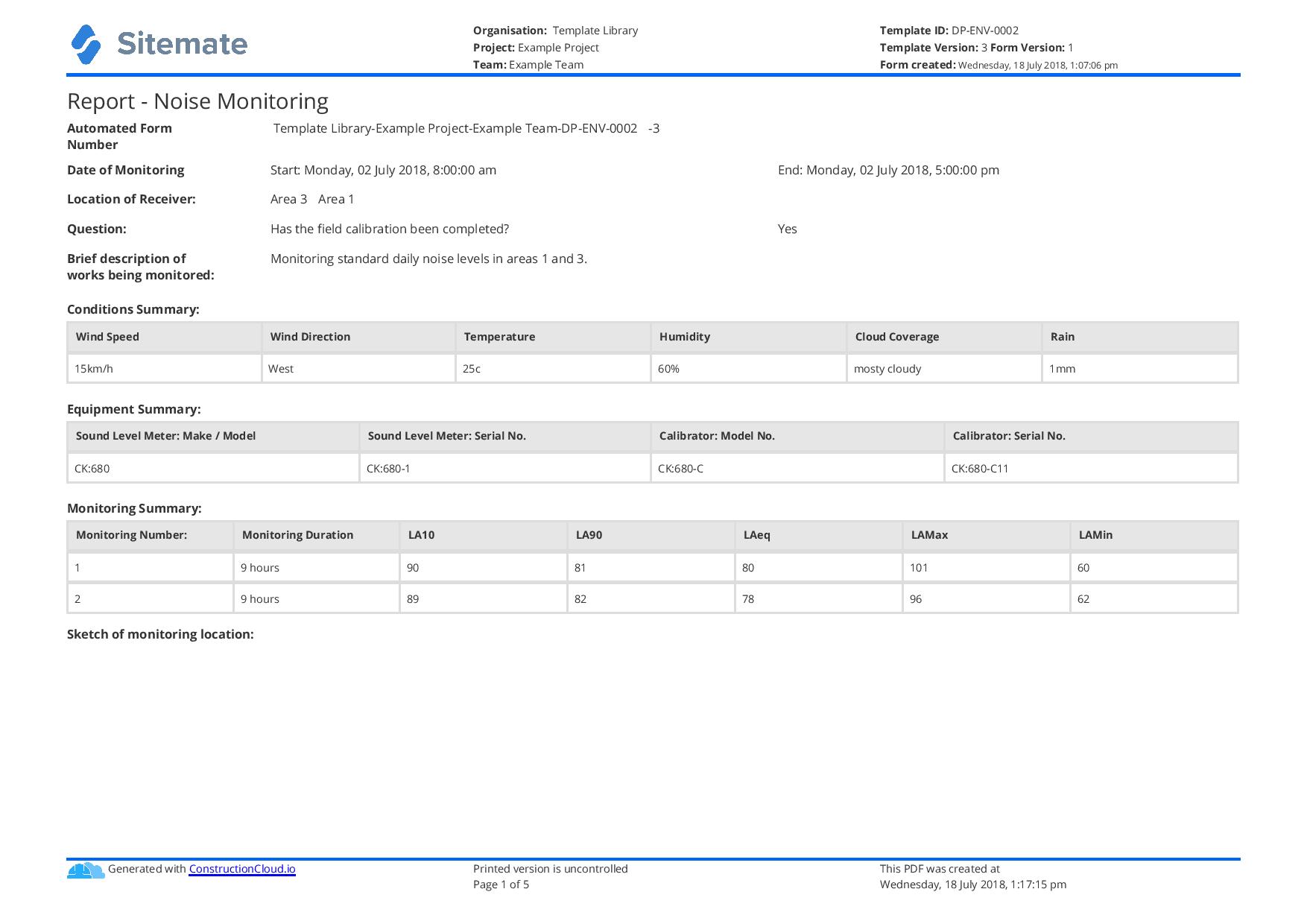
Start using this noise monitoring report template for free now.
Substitution and isolation
As has been mentioned, and is quite obvious to the people working on construction sites, some noise (a significant portion) created on site is inevitable. It's impossible to build a building or dig a tunnel without creating some serious noise.
The rise of capital and machinery in building has added to this noise; what used to be people with shovels is now a massive excavator. Even so, there have been a number of improvements in equipment and machinery technology and fueling which have made cleaner equipment which emit less noise and other types of pollution.
In saying all of this, where possible, construction workers and companies should attempt to substitute loud methods of work for quieter methods of work. While getting the job done and project progress usually take precedent of keeping site quiet, there is sometimes an alternate method of completing the same job which is quieter. Where possible, this method should be employed.
The other things workers and companies can do about the type of work they do is isolate certain areas and equipment when loud work is being performed.
Using noise control products such as baffles and attenuators helps dampen noise for both the workers and surrounding communities. These controls are very easy to implement, and can make a tangible different to noise levels.
Equipment
Equipment and machinery is a core source of noise pollution on construction sites. While radios and early-morning talk can sometimes wake the neighbours up, the real noise and real problems stem from the early morning jack hammer or heavy excavator.
A certain level of noise from these type of tools is uncontrollable, but maintaining tools properly; auditing older equipment which could be replaced for more efficient and quieter models; ensuring that the most suitable equipment for the job is on-hand; and doing some more research around your procurement processes all add up to reduce the noise levels and impact of your equipment.
Quiet work practices and administrative control
Last but certainly not least, it is important for companies to put in place administrative controls which are in the best interest of workers and communities. Without explicitly stating or discussing noise pollution and construction site noise best practices, people will likely make worse decisions.
Outside of the laws and regulations created by the local council, regulatory body or government which create hard restrictions on noise levels, times of work etc. companies can create their own time limits on noisy periods and rules around loud work which supplement these rules to create a more environmentally friendly and safe place to work and live.
There be specific sites, specific days, or specific circumstances which dictate more stringent levels of noise control. Adminstrative teams and departments should seek to be flexible and adaptable to these circumstances and adjust accordingly.
Outside of these noise restrictions and worker practices, the administrative and management departments of companies should always be looking for ways to better manage, control, and mitigate the levels of noise they create on construction sites. It's a mutually beneficial endeavour - for the company, it's people and the surrounding environment and communities.
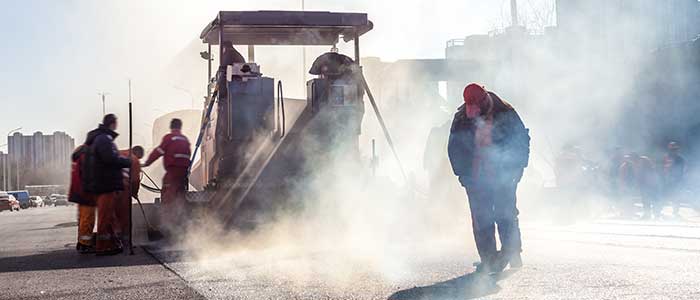
Noise Monitoring Report template
Setup, conduct, share & analyse noise monitoring reports more easily to keep everyones ears happy. See the template →